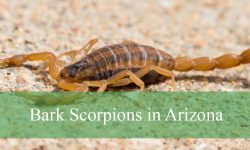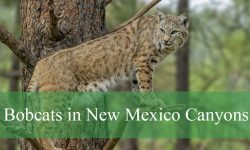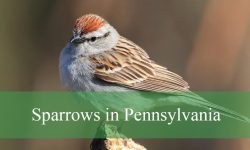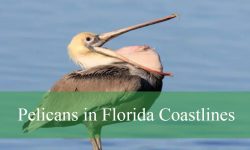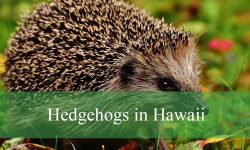Among North America’s mammals, the raccoon (Procyon lotor) is notable for its intelligence and adaptability. Known for their dexterous front paws, masked faces, and bushy ringed tails, these animals have captured the attention of wildlife enthusiasts, researchers, and even urban residents. In North Carolina, raccoons are widespread across forests, wetlands, suburban neighborhoods, and even urban centers, demonstrating an extraordinary ability to coexist with humans. Observing raccoons provides insight into their complex behavior, survival strategies, and ecological role in the state’s diverse habitats.
Understanding raccoons requires more than simply recognizing their appearance. Their behavior, diet, habitat preferences, and even subtle differences in size and coloration can reveal whether you are observing a typical eastern raccoon or a variant subspecies. This guide offers a comprehensive look at raccoons in North Carolina, detailing their species, subspecies, identifying characteristics, habitats, diet, behavior, and ways to safely coexist with them.
North Carolina’s varied landscapes—from the Atlantic coastal plains and rolling Piedmont to the rugged Appalachian Mountains—provide abundant resources for raccoons. Water sources such as rivers, creeks, and marshes are particularly important, as raccoons are highly dependent on aquatic ecosystems for food and shelter. Understanding their ecological needs and behavior can help residents appreciate these animals while minimizing conflicts in urban and suburban areas.
Species Overview

The raccoon population in North Carolina consists entirely of the Common Raccoon (Procyon lotor). This species is native to North America and has successfully expanded its range due to its remarkable adaptability. Unlike some other mammals that require highly specific habitats, raccoons thrive in diverse environments, from dense forests to suburban neighborhoods and agricultural lands. They are primarily nocturnal, which allows them to avoid many predators while exploiting food resources that are less accessible to other animals.
Adult raccoons in North Carolina typically weigh between ten and thirty pounds, although their size can vary depending on habitat and food availability. Their dense fur helps insulate them against cold winters, while their dexterous front paws allow them to manipulate objects, open containers, and forage efficiently. The characteristic black mask around the eyes and the bushy, ringed tail are not only striking but also serve practical functions. The mask reduces glare and enhances night vision, while the tail provides balance and warmth.
Subspecies in North Carolina
Although only one raccoon species exists in the state, there are several recognized subspecies that differ in subtle ways, primarily in size and fur characteristics. The most common subspecies in North Carolina is the Eastern Raccoon (Procyon lotor lotor). This subspecies is prevalent throughout the eastern United States and is distinguished by its soft, long fur and medium-sized body. Eastern raccoons tend to be highly adaptable and are often the raccoons most commonly seen in urban and suburban areas.

Another subspecies occasionally identified in North Carolina is the Upper Mississippi Valley Raccoon (Procyon lotor hirtus). While more commonly found north of the Ohio River, isolated individuals can appear in the western parts of the state. This subspecies is slightly larger and more robust than the typical eastern raccoon, with denser fur and a somewhat broader facial mask. Despite these differences, both subspecies are considered part of the same species and share similar behaviors, diets, and ecological roles.
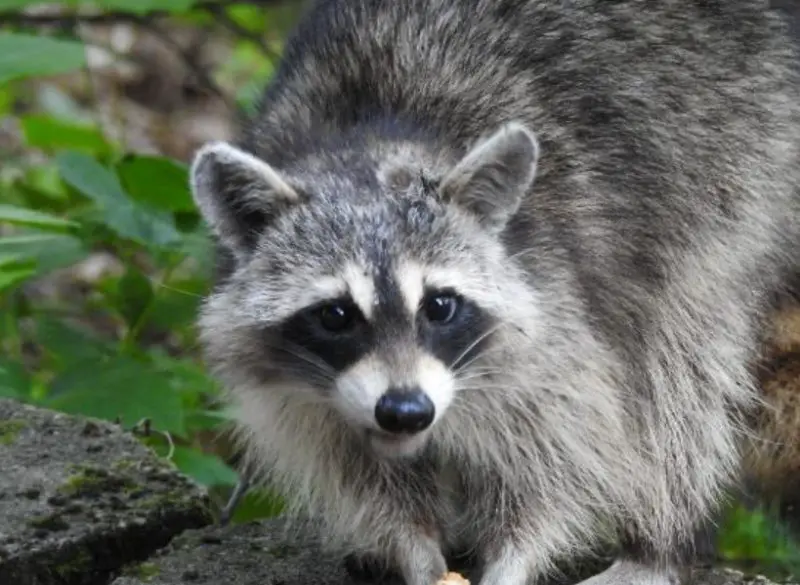
Recognizing subspecies differences in the field can be challenging. Size and coat texture are the primary indicators, and slight variations in behavior or habitat preference may also help distinguish them. However, most casual observers will simply encounter the general characteristics of the Common Raccoon, which are sufficiently distinctive for identification.
Physical Characteristics and Identification
Raccoons are medium-sized mammals with a distinctive appearance that makes them relatively easy to identify. Adults generally measure between sixteen and twenty-eight inches from nose to base of tail, with the tail adding an additional eight to sixteen inches. Their fur is grayish-brown with lighter underparts, and their bushy tails feature five to seven black rings. The black facial mask contrasts sharply with their otherwise light-colored face, giving them a mischievous, almost theatrical appearance.
Their dexterous front paws are one of the raccoon’s most remarkable features. Unlike most mammals, raccoons can manipulate objects with incredible precision. This skill allows them to open trash cans, untie knots, and forage for small prey in crevices and waterways. Their sharp claws aid in climbing trees and digging, while their sensitive pads help them detect food by touch.
Juvenile raccoons resemble smaller versions of adults but have softer fur and shorter tails. Young raccoons typically stay with their mothers for several months before venturing out independently. Observing family groups, especially during spring and early summer, is common, as mothers care for litters of two to five kits.
Habitat and Distribution
Raccoons are remarkably adaptable and occupy almost every type of habitat in North Carolina. In the coastal plains, raccoons are commonly found near marshes, swamps, and tidal creeks, where food sources are abundant. In the Piedmont region, they thrive in hardwood forests, agricultural lands, and suburban areas. The mountainous regions of western North Carolina also support raccoon populations, particularly in forested valleys and near streams.
Proximity to water is a key factor in raccoon distribution. These omnivorous mammals rely on aquatic habitats for food such as crayfish, frogs, and freshwater invertebrates. Wetlands, rivers, and ponds provide not only feeding opportunities but also dens for shelter and protection. Urban raccoons, on the other hand, exploit human-provided resources such as garbage, pet food, and garden crops, demonstrating their ability to adapt to human-dominated landscapes.
Raccoons are generally territorial but do not have rigid boundaries, especially in areas with abundant food. Home ranges vary depending on habitat quality, with urban raccoons typically traveling shorter distances due to concentrated food sources. In contrast, raccoons in more remote forests may cover several miles in search of sustenance.
Diet and Foraging Behavior
Raccoons are opportunistic omnivores, consuming a diverse array of foods depending on season and habitat. Their diet includes fruits, nuts, seeds, insects, small mammals, birds, eggs, amphibians, and aquatic invertebrates. In urban areas, raccoons may scavenge for human food scraps, making garbage cans and compost piles prime foraging sites. Their adaptability in feeding behavior is one reason for their widespread success across North Carolina.
Foraging typically occurs at night, although raccoons may be active during the day in areas with minimal human disturbance. They use their highly sensitive paws to feel and manipulate food items, often washing their prey in water before consumption. This behavior, known as “dousing,” has been observed in captive raccoons and in the wild, although it is not fully understood whether it is for hygiene, sensory enhancement, or instinctual practice.
Seasonal changes influence raccoon diet and behavior. In spring and summer, young raccoons learn to forage alongside their mother, focusing on protein-rich foods like insects and small amphibians. In fall, they increase consumption of fruits and nuts to build fat reserves for the winter months, during which they reduce activity but do not hibernate fully.
Behavior and Social Structure
Raccoons are generally solitary animals outside the breeding season, though mothers care for their young for several months. Social interactions may occur at abundant food sources or communal denning sites. While nocturnal activity dominates their behavior, raccoons are highly intelligent and capable of learning new behaviors to exploit food and shelter resources.
Breeding occurs from late winter to early spring, with gestation lasting about 63 days. Litter sizes usually range from two to five kits. Mothers select dens in hollow trees, rock crevices, abandoned burrows, or even attics and chimneys in urban areas. Juveniles remain with their mother until fall, gradually learning survival skills such as climbing, swimming, and foraging.
Raccoons are agile climbers and swimmers. Their climbing ability allows them to escape predators and access tree hollows for denning. Swimming skills enable them to forage for aquatic prey and navigate flooded habitats. Their intelligence and problem-solving abilities make them adept at navigating complex environments, both natural and human-made.
Interaction with Humans
Raccoons often come into contact with humans in urban and suburban areas. While they can be entertaining to observe, they may cause property damage, spread disease, and prey on pets or livestock if not managed properly. Rabies, canine distemper, and raccoon roundworm are among the diseases associated with raccoons. Proper precautions, such as securing trash, avoiding feeding wildlife, and vaccinating pets, help reduce risks.
Wildlife authorities recommend humane methods for preventing conflicts. Exclusion techniques, such as sealing entry points to attics or chimneys and using raccoon-proof trash containers, are effective strategies. Observing raccoons from a distance allows people to enjoy their presence safely, without interfering with natural behaviors.
Conservation and Ecological Importance
Raccoons play an important role in North Carolina ecosystems. As omnivores, they help control insect populations, disperse seeds, and contribute to the balance of wetland and forest ecosystems. Their scavenging behavior aids in nutrient recycling, and they serve as prey for larger predators such as bobcats, coyotes, and great horned owls.
Despite their adaptability, raccoons face threats from habitat loss, road mortality, and disease. Conservation efforts focus on preserving natural habitats, monitoring populations, and educating the public about coexistence. Maintaining riparian buffers, protecting wetlands, and providing safe corridors for wildlife help support healthy raccoon populations while reducing human-wildlife conflicts.
Observation and Wildlife Watching Tips
For those interested in observing raccoons, the best times are dusk and night when they are most active. Areas near water, wooded neighborhoods, and wildlife reserves often provide ideal viewing opportunities. Using a flashlight with red or dim light can reduce disturbance and allow for natural behavior observation. Avoid approaching or attempting to feed raccoons, as habituation can lead to dangerous interactions.
Wildlife photographers and enthusiasts should be patient, as raccoons are cautious and intelligent. Observing from a distance, keeping noise low, and remaining stationary for periods increases the likelihood of capturing natural behaviors such as foraging, climbing, and social interaction among family groups.
Summary
Raccoons in North Carolina represent a remarkable example of adaptability and ecological significance. The state is home to the Common Raccoon, with subspecies such as the Eastern Raccoon and occasional Upper Mississippi Valley Raccoon. Identifying raccoons involves noting their size, fur texture, distinctive mask, and bushy ringed tail. Their habitats range from coastal wetlands to mountainous forests, and they play important roles as omnivores and scavengers in ecosystems.
Observing raccoons provides insight into their intelligence, dexterity, and survival strategies. Coexisting with these animals requires understanding their behavior, diet, and ecological needs while taking precautions to avoid conflicts. By appreciating raccoons and their role in North Carolina’s wildlife, residents can enjoy the presence of these captivating mammals while promoting safe and sustainable interactions.
FAQs About Raccoons in North Carolina
What species of raccoons are found in North Carolina?
North Carolina is home to only one raccoon species, the Common Raccoon (Procyon lotor). However, this species includes subspecies such as the Eastern Raccoon (P. l. lotor) and, occasionally, the Upper Mississippi Valley Raccoon (P. l. hirtus). These subspecies differ slightly in size and coat characteristics but share similar behaviors and habitats.
How can I identify a raccoon in the wild?
Raccoons are recognizable by their medium size, grayish-brown fur, bushy tails with black rings, and distinctive black “mask” across their eyes. Juveniles look like smaller versions of adults, and raccoons’ dexterous front paws allow them to manipulate objects while foraging. Observing them at night, near water or wooded areas, is the best way to see them in action.
Where do raccoons live in North Carolina?
Raccoons thrive in a variety of habitats, including forests, wetlands, riversides, and urban areas. They are highly adaptable and prefer areas with access to water sources such as creeks, ponds, and marshes. In urban settings, raccoons often make dens in attics, chimneys, or hollow trees and forage in gardens or garbage areas.
What do raccoons eat?
Raccoons are omnivorous and opportunistic feeders. Their diet includes fruits, nuts, seeds, insects, small mammals, birds, eggs, amphibians, and aquatic invertebrates. In cities and suburbs, they may scavenge human food, compost, and pet food. Seasonal changes influence their diet, with protein-rich foods favored in spring and summer, and fruits and nuts consumed more in fall.
Are raccoons dangerous to humans or pets?
Raccoons can carry diseases such as rabies, canine distemper, and raccoon roundworm, which may pose risks to humans and pets. While they are generally not aggressive, they should never be approached or fed. Using safe wildlife practices, securing trash, and vaccinating pets can reduce potential risks.
How can I prevent raccoon problems in my yard?
Preventing raccoon issues involves removing food sources, securing trash bins, closing gaps in attics or chimneys, and avoiding feeding wildlife. Motion-activated lights and fencing around gardens can help deter raccoons. Observing them from a distance without direct interaction is the safest way to enjoy their presence.
When is the best time to see raccoons in North Carolina?
Raccoons are primarily nocturnal, so early evening and nighttime are the best times for observation. Spring and summer are ideal for seeing young raccoons learning to forage with their mother, while fall is the time when raccoons are most active in gathering food for the winter months. Using red or dim lights can help minimize disturbance during wildlife watching.

